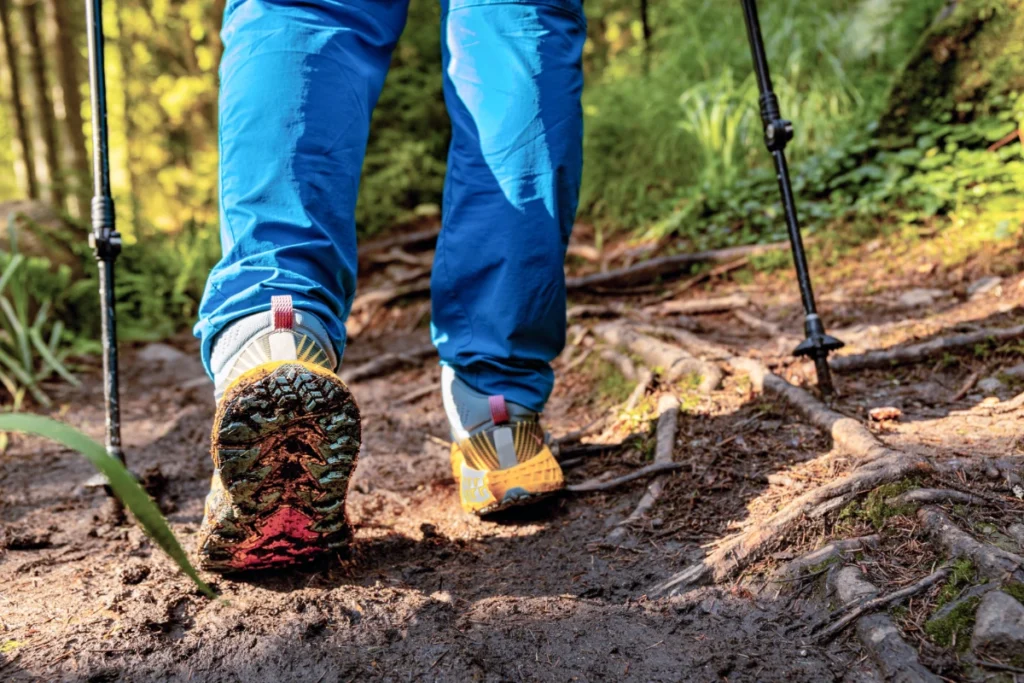The 8-Week Hiking Workout Program to Crush Your Next Hike
Train Smart Before You Hit the Trail
Last Updated: December 19, 2025
Hiking isn’t just walking in the woods. I’ve spent decades on trails without major mishaps, but I’ve still had to adjust how I move and prepare over time. Small things add up on longer hikes, from how your feet strike the ground to how your body handles steady climbs and descents. Those details matter more than people expect.
As my fitness changed, especially after losing weight, I had to relearn how I walked on the trail. Years of flat-footed steps carried over into hiking, and correcting that to a more natural heel-to-toe stride made a noticeable difference in comfort and endurance. Even something as minor as blisters the first time I used hiking poles taught me that gear and technique both affect how your body holds up over a long day.
This eight-week hiking workout plan comes from that steady process of paying attention and adjusting, not from chasing extreme challenges. The goal is to help you feel prepared for real trails and real terrain, whether you’re easing back into hiking or building toward longer days outside. Training doesn’t have to be dramatic to be effective.

Why Training Matters
Nature is a generous teacher but also a tough one. Roots, rocks, steep grades, long descents, sudden weather changes. Your body has to deal with all of it. When you build endurance, strength, and mobility ahead of time, you lower the risk of injury and unlock the energy to actually enjoy those views you hiked in for.
Start With an Honest Check-In
Before you dive into workouts, figure out where your hiking fitness is right now. Can you walk a few miles without stopping? How’s your balance on uneven ground? If you’ve been mostly sedentary, no shame in starting small. And if you’ve got health concerns, check with your doctor before you start pushing limits.
Four Pillars of Hiking Fitness
Cardio
Think of it as your gas tank. Hiking burns fuel fast, especially when the trail goes uphill. Mix in brisk walking, running, cycling, or swimming. The sweet spot is about 150 minutes of moderate effort or 75 minutes of higher effort each week.
Strength
Your legs carry you, your core keeps you steady, and your upper body helps when you’re using hiking poles or scrambling over rock. Squats, lunges, deadlifts, planks. Twice a week is plenty if you’re consistent.
Flexibility and Mobility
Tight hips and calves are an injury waiting to happen. Dynamic stretches before a workout and static stretches after go a long way. Yoga or Pilates once a week is an easy win here.
Balance and Stability
The difference between catching yourself on a root and rolling an ankle comes down to balance. Practice single-leg stands, throw in a yoga flow, or use a wobble board if you’ve got one.
The 8-Week Ramp-Up Plan
Weeks 1–2
Cardio three times a week for 30 minutes. Add in bodyweight squats, lunges, planks, plus daily stretching. Balance drills three times a week.
Weeks 3–4
Push cardio up to 30–45 minutes four times a week. Add resistance to your strength sessions. Try yoga or Pilates. Balance work moves up a notch with tools like a Bosu ball if you have access.
Weeks 5–6
Now it’s time to mimic the trail. Seek out hills or stair climbs for cardio. Strength work gets heavier. Keep up the stretching and balance routines.
Weeks 7–8
Simulate the real thing. Long hikes or trail runs 60–90 minutes four times a week. Maintain strength, mobility, and balance sessions. This is where everything comes together.
Listen to Your Body
Rest days are just as important as workout days. Soreness is normal, pain is not. Adjust intensity when you need to. The trail isn’t going anywhere.
FAQs
At least 8 weeks if you’re starting from scratch. More if your trip is a multi-day trek.
Write down workouts. Pay attention to how long it takes to recover and how you feel on actual hikes.
Yes. Hiking demands all of it. Skip one and you’ll feel it on the trail.
Sure, just keep it short and choose a trail within your comfort zone. Training just opens up bigger, more rewarding adventures.
Stop. Talk to a healthcare pro before you push further. Pain is a warning sign.